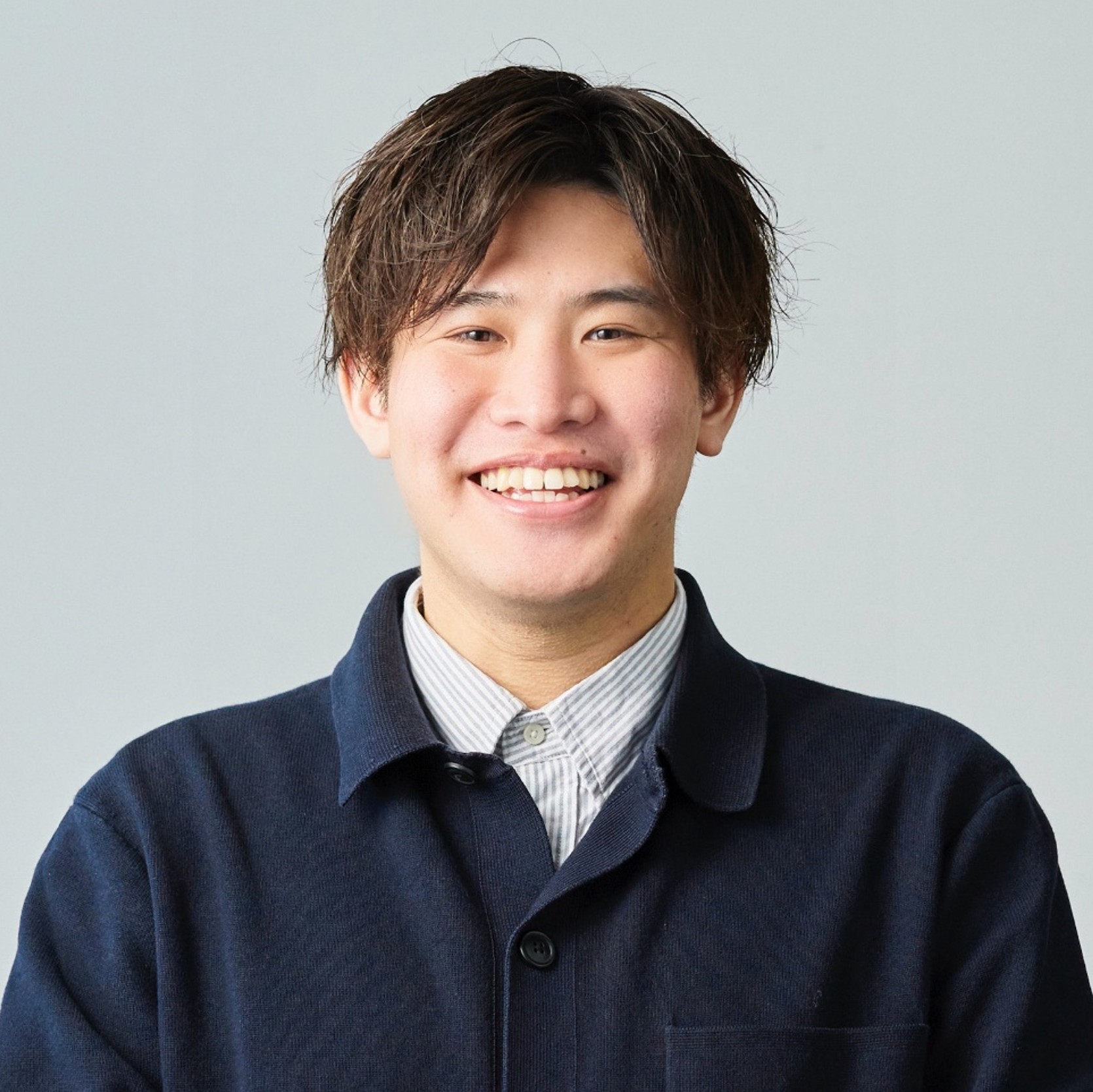|
所属組織 |
大学院都市イノベーション研究院 都市イノベーション部門 |
|
職名 |
助教 |
|
生年 |
1996年 |
|
メールアドレス |
|
|
関連SDGs |
直近の代表的な業績 (過去5年) 【 表示 / 非表示 】
-
【論文】 中間季の換気行為に着目した都市部の保育施設における換気に関する研究(日本建築学会環境系論文集) 2023年04月
【論文】 Study on ventilation issues in urban nursery facilities: Long-term field survey in Yokohama, Japan(E3S Web of Conferences) 2023年06月
【論文】 コロナ禍の換気を考慮した夏季の保育室環境と幼児・保育者の生理反応に関する研究(人間と生活環境) 2024年11月
【論文】 大きな声量を伴う活動を想定したCOVID-19の感染確率に関する研究 ―ワンルーム型の保育施設の換気量に着目して―(臨床環境医学) 2024年12月
【論文】 コロナ禍の園長の意識から見た都心部の保育施設の課題:換気を中心としたヒアリング調査の考察(日本健康開発雑誌) 2025年06月
学歴 【 表示 / 非表示 】
-
2021年4月-2024年3月
横浜国立大学 都市イノベーション学府 都市イノベーション専攻 博士課程 修了
-
2019年4月-2021年3月
横浜国立大学 都市イノベーション学府 建築都市文化専攻 修士課程(博士前期課程) 修了
-
2017年4月-2019年3月
岐阜工業高等専門学校 専攻科 先端融合開発専攻 卒業
-
2012年4月-2017年3月
岐阜工業高等専門学校 建築学科 卒業
学内所属歴 【 表示 / 非表示 】
-
2024年4月-現在
専任 横浜国立大学 大学院都市イノベーション研究院 都市イノベーション部門 助教
-
2024年4月-現在
併任 横浜国立大学 大学院都市イノベーション学府 建築都市文化専攻 建築都市文化コース 助教
-
2024年4月-現在
併任 横浜国立大学 理工学部 建築都市・環境系学科 建築 助教
-
2024年4月-現在
併任 横浜国立大学 都市科学部 建築学科 助教
所属学協会 【 表示 / 非表示 】
-
2022年5月-現在
日本臨床環境医学会
-
2021年9月-現在
空気調和・衛生工学会
-
2020年10月-現在
人間-生活環境系学会
-
2018年3月-現在
こども環境学会
-
2016年4月-現在
日本建築学会
論文 【 表示 / 非表示 】
-
コロナ禍の換気を考慮した夏季の保育室環境と幼児・保育者の生理反応に関する研究
種市慎也, 胡怡賢, 大西達也, 田中稲子
人間と生活環境 31 ( 2 ) 57 - 65 2024年11月 [査読有り]
担当区分:筆頭著者, 責任著者 記述言語:日本語 掲載種別:研究論文(学術雑誌) 出版者・発行元:人間-生活環境系学会 共著
<p>新型コロナウイルスの影響で、様々な施設において窓開け換気を実施する機会が多くなったが、夏季や冬季には熱的快適性が損なわれる懸念がある。また、筆者らの調査より、保育施設の換気不足に加えて、保育活動中の身体活動量に基づいた適切な換気設計の必要性が示された。本研究では、窓開け換気が多くみられたコロナ禍の夏季において、保育活動中の保育室環境及び幼児・保育者の生理量の実態を明らかにすることを目的に、横浜市の保育施設2園を対象に調査を行った。その結果、保育室の温度とCO<sub>2</sub>濃度は、窓開け換気の励行やエアコンの使用によって過去の調査結果よりも良好であり、幼児・保育者の鼓膜温度も37℃程度であったことから、熱中症リスクは低いことが確認された。また、身体活動量は、幼児・保育者ともに平均1.7 METs以上と換気基準で想定された値よりも高いことが明らかとなり、この値より算出された保育施設の必要換気量も提示した。</p>
-
中間季の換気行為に着目した都市部の保育施設における換気に関する研究
種市 慎也, 田中 稲子, 宮島 光希, 松橋 圭子
日本建築学会環境系論文集 88 ( 806 ) 288 - 299 2023年4月 [査読有り]
担当区分:筆頭著者, 責任著者 記述言語:日本語 掲載種別:研究論文(学術雑誌) 出版者・発行元:日本建築学会 共著
<p>This paper aims to clarify ventilation issues, and the field survey was conducted during the intermediate season at nursery facilities in Yokohama City. As a result, nursery facilities are classified into three categories according to ventilation behavior of nursery teachers. “Window-ventilation type” tends to have high room temperature and risk of heat stroke. “Mechanical-ventilation type” and “Combined-ventilation type” indicate high CO<sub>2</sub> concentrations and have difficulties with ventilation routes and use of ventilation equipment. Based on the estimated ventilation rates, “Mechanical-ventilation type” was found not to meet the ventilation standards and design ventilation rates.</p>
-
コロナ禍の園長の意識から見た都心部の保育施設の課題:換気を中心としたヒアリング調査の考察
松橋 圭子, 種市 慎也, 田中 稲子
日本健康開発雑誌 46 45 - 53 2025年6月 [査読有り]
記述言語:日本語 掲載種別:研究論文(学術雑誌) 出版者・発行元:一般財団法人 日本健康開発財団 共著
<p><b>背景・目的</b> 都心部の保育施設では、十分な室内面積や換気量の確保が難しい場合があり、子どもや保育者の様々な感染リスクが懸念される。本研究では、コロナ禍前後の感染症対策に対する保育者の意識と保育施設が立地する環境特性に着目し、保育施設が抱える課題の整理を目的とする。</p><p><b>方法</b> 筆者らの実測結果より、保育室のCO<sub>2</sub>濃度や温湿度に差がみられ、換気をはじめとする感染症対策の意識に違いがあると予想された横浜市の5施設を調査対象とした。各施設の園長を対象に、新型コロナウイルスに対する感染症対策やコロナ禍前後での意識変化、コロナ対策での困りごと等に関するヒアリング調査を実施した。</p><p><b>結果</b> いずれの保育施設も外部からの交通騒音や保育室からの音漏れを気にする必要のない立地環境であったが、積極的に窓開け換気を実施していたのは3施設であった。開閉可能な窓が限られていることから、自由に窓開け換気が行えない施設も存在した。しかし、どの施設においてもコロナ禍を経たことで換気意識が高まるとともに、子どもや保育者自身の健康意識、さらには保育者同士の連携意識の向上といった意識変化が確認された。</p><p><b>考察</b> 立地環境や施設特性に関わらず、保育施設では換気方法に関する多くの疑問が生じていた。施設を管理する立場として、空気環境の管理に関する知見や情報を求める切実な姿も窺えたことから、保育者にも理解しやすい情報発信の必要性が明らかとなった。</p>
-
大きな声量を伴う活動を想定したCOVID-19の感染確率に関する研究 ―ワンルーム型の保育施設の換気量に着目して―
胡 怡賢, 種市 慎也, 田中 稲子, 大西 達也
臨床環境医学 33 ( 1 ) 1 - 12 2024年12月 [査読有り]
記述言語:日本語 掲載種別:研究論文(学術雑誌) 出版者・発行元:日本臨床環境医学会 共著
COVID-19のクラスター感染は、保育施設においても報告事例がある。また、保育活動中は大きな声での発声機会が多いことや就学前児童のマスク着用が一律に求められていないことを鑑みると、感染に対する脆弱性が高いことが懸念される。そこで、本研究ではワンルーム型の保育施設を対象に、保育者が継続的な発声(大声)を行った際のCOVID-19の拡散性状や感染確率をCFD解析にて明らかにすることを目的とした。その結果、保育エリアの換気設備の位置や家具配置によって、感染性粒子濃度分布や感染確率に差がみられた。また、出席率が50%の場合、一人当たりの換気量は60 m3/hであり、建築基準法の基準値(20 m3/h)と比べて、感染確率は46.7%~59.2%減少することが確認された。さらには、換気量の違いによって、定常解析と非定常解析の感染確率の算出結果に差がみられ、短時間の解析の場合、非定常解析による検証が適切であることが示された。
-
Study on Rooftop PV Generation Considering Energy Demand in Yokohama City
Tatsuro ITOKAWA, Keiko INAGAKI, Satoshi YOSHIDA, Shinya TANEICHI
Journal of Asian Urban Environment 2024 275 - 280 2024年10月 [査読有り]
記述言語:英語 掲載種別:研究論文(国際会議プロシーディングス) 共著
The aim of this study is to evaluate the potential of rooftop-mounted solar panel installations in cities and to propose one of the city's renewable energy diffusion policies. In this study, the ratio of solar power generation to energy demand was calculated for each area and evaluated as a replenishment rate. In order to analyze trends in replenishment rates, PV generation, and solar radiation attenuation rates, topography, zoning, and building height dispersion were analyzed for each area to identify the characteristics of the most effective areas for PV installation in the city. As a result, the average annual replenishment rate was as high as 52% in areas with many detached houses, such as low-rise residential areas, while it was as low as 26% in coastal areas with a concentration of factories. There was no clear relationship between topography and buildings. The difference in demand for different building types seems to have a greater impact on the sufficiency rate. On the other hand, in times of emergency, such as when infrastructure is disrupted, factory zones that generate large amounts of electricity could serve as bases for supplying power. As described above, we examined the characteristics of areas that are highly effective in introducing photovoltaic power generation.
受賞 【 表示 / 非表示 】
-
2025年度人間-生活環境系学会 奨励賞
2025年11月 人間-生活環境系学会 「コロナ禍の換気を考慮した夏季の保育室環境と幼児・保育者の生理反応に関する研究」
受賞者:種市慎也 -
2021年度日本建築学会優秀修士論文賞
2021年09月 日本建築学会
受賞者:種市慎也 -
学業成績優秀者表彰
2021年03月 横浜国立大学大学院
受賞者:種市慎也 -
人間-生活環境系学会大会発表賞
2020年12月 人間-生活環境系学会
受賞者:種市慎也 -
都市イノベーション学府学生表彰
2020年09月 横浜国立大学大学院都市イノベーション学府
受賞者:種市慎也
その他競争的資金獲得・外部資金受入状況 【 表示 / 非表示 】
-
保育施設の立地環境が室内空気環境及び子ども・保育者の身体活動に及ぼす影響の解明
2025年4月 - 2026年3月
民間財団等 2024年度研究助成
担当区分:研究代表者
-
都市に開設する保育施設の新たな環境計画のための乳幼児の生理反応に関する研究
2022年4月 - 2023年3月
民間財団等 2021年度奨励研究助成
担当区分:研究代表者
-
暑熱環境下の換気を重視した保育施設における環境計画のための乳幼児の生理反応に関する基礎的研究
2022年4月 - 2023年2月
民間財団等 2022年度笹川科学研究助成
担当区分:研究代表者
研究発表 【 表示 / 非表示 】
-
(受賞講演)コロナ禍の換気を考慮した夏季の保育室環境と幼児・保育者の生理反応に関する研究
種市慎也 [招待有り]
第49回 人間-生活環境系シンポジウム(奈良) 人間-生活環境系学会
開催年月日: 2025年11月
記述言語:日本語 会議種別:口頭発表(招待・特別)
開催地:奈良女子大学 国名:日本国
-
都市の街路空間における温熱環境の実態と歩行者・滞在者の熱的快適性に及ぼす影響
宮沢七菜, 種市慎也, 吉田聡, 稲垣景子
2024年度(第95回)関東支部研究発表会 2025年3月 日本建築学会関東支部
開催年月日: 2025年3月
記述言語:日本語 会議種別:口頭発表(一般)
pp.105-108
-
CO2呼出量推定のための母親と幼児の身体活動量に関する研究
種市慎也, 胡怡賢, 大西達也, 田中稲子
日本建築学会大会(関東) 日本建築学会
開催年月日: 2024年8月
記述言語:日本語 会議種別:口頭発表(一般)
pp.91-92
-
横浜市の保育施設における夏季の室内空気環境と幼児・保育者の生理反応に関する研究
種市慎也, 胡怡賢, 大西達也, 田中稲子
日本建築学会大会(近畿)
開催年月日: 2023年9月
記述言語:日本語 会議種別:口頭発表(一般)
pp.629-630
-
ワンルーム型の保育施設を対象とした保育者の歌唱時におけるCOVID-19の感染確率と換気量の関係
胡怡賢, 種市慎也, 大西達也, 田中稲子
第31回 日本臨床環境医学会学術集会
開催年月日: 2023年6月
記述言語:日本語 会議種別:口頭発表(一般)
p.69
担当授業科目(学内) 【 表示 / 非表示 】
-
2025年度 建築学概論・演習
都市科学部
-
2025年度 建築・都市環境工学演習
都市科学部
-
2025年度 地域環境計画演習
都市科学部
-
2025年度 都市環境リスク共生論A
都市科学部
-
2025年度 都市環境リスク共生論B
都市科学部
その他教育活動及び特記事項 【 表示 / 非表示 】
-
2025年03月2024年度(第95回)日本建築学会関東支部研究発表会 若手優秀研究報告賞 受賞 (学生の学会賞等の受賞実績)
-
2025年03月令和6年度最優秀論文・水煙会賞 受賞 (学生の学会賞等の受賞実績)
-
2025年03月2024年度(第95回)日本建築学会関東支部研究発表会 優秀研究報告集 選出 (学生の学会賞等の受賞実績)
-
2024年10月AIUE 2024 Best Presenter Award 受賞 (学生の学会賞等の受賞実績)
-
2024年09月ISAIA 2024 Academic Oral Session Award 受賞 (学生の学会賞等の受賞実績)
委員歴 【 表示 / 非表示 】
-
こども環境学会2026年大会(横浜)実行委員会
2025年08月 - 現在 委員
委員区分:学協会
-
日本建築学会関東支部 環境工学専門研究委員会
2024年10月 - 現在 委員
委員区分:学協会
社会活動(公開講座等) 【 表示 / 非表示 】
-
小学6年生の体験学習「風をうまく利用して生活しよう」
役割:講師, 企画, 実演
日本建築学会学校教育支援部会、東京建築士会杉並支部、杉並区立高円寺小学校 2025年9月
-
ADC×NUL みみのひ企画「こどものための音環境」
役割:企画, 運営参加・支援, 実演
一般社団法人こどものための音環境デザイン(ADC)、横浜国立大学地域連携推進機構Next Urban Lab「子どもの成育環境デザイン」 2025年3月
対象: 幼稚園以下, 大学生, 大学院生, 教育関係者, 保護者, 研究者, 社会人・一般, 企業, 市民団体, 行政機関, メディア
種別:セミナー・ワークショップ
今、子どもはもちろん、大人も含めた誰もが、安心して穏やかな気持ちで過ごすことのできる空間・環境を求めています。また、にぎやかな環境が苦手な子どもも増えていて、その対応に苦慮されている保育園も多いようです。
そこで、設立5周年を迎える「一般社団法人こどものための音環境デザイン」と、良好な子どもの成育環境について実践的な研究を続けている「横浜国立大学地域連携推進機構Next Urban Lab 子どもの成育環境デザイン」がタッグを組み、こどものための音環境について、様々な角度から参加者と一緒に楽しみながら考えるイベントを企画しました。2024年10月、羽沢横浜国大駅前「HAZAAR」内に横浜国立大学のサテライト施設としてオープンした「YNU BASE HAZAWA」を会場に、3つのイベントを実施します。
企画1:手作り楽器のワークショップと親子で楽しむミニコンサート ※参加申込みは別に設定します
企画2:居心地の良い音環境づくりに関するレクチャーとYNU BASE HAZAWAの“響き”をいろいろな吸音材で変化させるワークショップ
企画3:本音トーク「保育室の音環境を整えたら、こんなすごいことが」 -
役割:講師, 情報提供
横浜国立大学地域連携推進機構NUL、一般社団法人 園Power 2023年12月
対象: 大学生, 大学院生, 教育関係者, 研究者, 社会人・一般, 企業, 行政機関
種別:セミナー・ワークショップ
子どもの成育環境の改善を目的に研究者、保育者、設計者が集まり、活動しているNext Urban Lab 子どもの成育環境デザインユニットでは、近年ビル内保育施設の空気環境の調査とその改善に実践的に取り組んできました。その成果を広く共有し、さらなる改善を考えるためにセミナーを開催します。
2001年以降、待機児童対策で保育施設(屋外遊戯場)の設置基準が緩和されて以降、駅近の商業施設やオフィスビルに保育施設が作られるようになりました。開けられる窓がほとんどないビル内の施設は機械換気設備に依存しています。しかし、一般の施設とは利用者数も活動量も異なる保育施設では、必要な換気量が不足している実態が分かってきました。
セミナーでは、横浜市のビル内保育施設で取り組んだ換気不足解消のための開口部の改修事例を紹介いたします。そして排煙窓に関する課題も含め、良好な空気環境の保育施設づくりや改修についてディスカッションを交え考えます。 -
役割:講師
一般社団法人こどものための音環境デザイン(ADC) 2022年3月
対象: 大学生, 大学院生, 教育関係者, 研究者, 社会人・一般, 企業, 行政機関
種別:セミナー・ワークショップ
こどもを取り巻く環境について考えるとき、「音」や「空気」など目に見えない部分を考えることは、とても大切です。
活動を続ける中で、音に限らず目に見えない環境を整えることが、こどもにとって非常に大切であるにもかかわらず、保育などの現場では見落とされがちであることを感じるようになりました。
そこで設立 2 周年記念企画の今回は、"心を育てる保育環境" をキーワードにワークショップや著書の執筆など、様々な分野で活躍されている佐藤将之先生を講師にお迎えし、思いと環境をつなぐ保育の空間デザインについて、たっぷり語っていただきます。
さらに、こども施設に関連する目に見えない環境について、最先端の研究に邁進している若き研究者 3 名から、より具体的なこどものための環境デザインについて話題提供いただきます。
◇特別講演
『心を育てる保育環境 -思いと環境をつなぐ保育の空間デザイン-』
佐藤 将之 氏(早稲田大学 人間科学学術院 教授)
◇若き研究者からの話題提供
『特別な支援を必要とする子どものためのスペース作り』
荒井 みなみ さん(明治大学大学院 博士前期課程)
『都市部の保育施設が抱える換気の問題点と改善対策事例』
種市 慎也 さん(横浜国立大学大学院 博士課程後期)
『保育施設新設への賛否に関係する要因の分析 -福岡市における意識調査から-』
片岡 寛子 さん(九州大学大学院 芸術工学府 博士後期課程) -
Next Urban Lab 子どもの成育環境デザイン
役割:運営参加・支援, 調査担当
横浜国立大学地域連携推進機構 2021年4月 - 現在
学内活動 【 表示 / 非表示 】
-
2025年04月-現在建築学教室広報WG 幹事 (その他の主要活動)
-
2024年09月-現在建築学科創設100周年記念事業 企画・広報委員会 委員 (その他の主要活動)
-
2024年09月-現在建築学科創設100周年記念事業 実行委員会 委員 (その他の主要活動)
-
2024年09月-2025年3月建築学科広報WG 委員 (その他の主要活動)
-
2024年04月-現在総務企画広報系委員会 委員 (部局内委員会)



